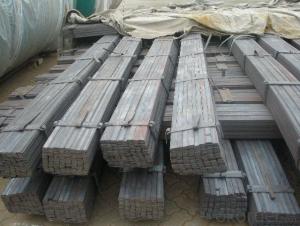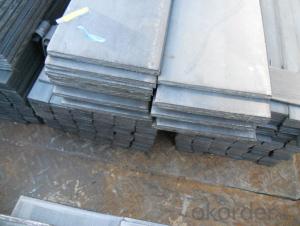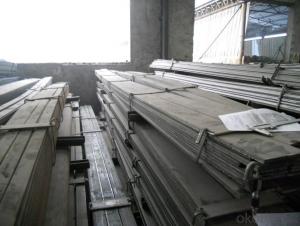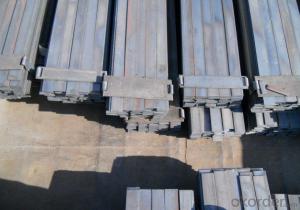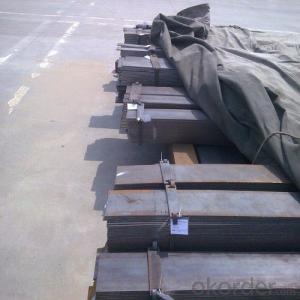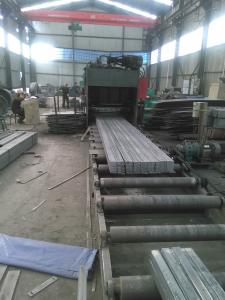Hot Rolled Steel Flat Bar with High Quality
- Loading Port:
- Tianjin
- Payment Terms:
- TT OR LC
- Min Order Qty:
- 25 m.t.
- Supply Capability:
- 10000 m.t./month
OKorder Service Pledge
OKorder Financial Service
You Might Also Like
Product Description:
OKorder is offering high quality Slit Cutting Flat Bar at great prices with worldwide shipping. Our supplier is a world-class manufacturer of steel, with our products utilized the world over. OKorder annually supplies products to European, North American and Asian markets. We provide quotations within 24 hours of receiving an inquiry and guarantee competitive prices.
Product Applications:
Slit Cutting Flat Bars are ideal for structural applications and are widely used in the construction of buildings and bridges, and the manufacturing, petrochemical, and transportation industries.
Product Advantages:
OKorder's Slit Cutting Flats Barare durable, strong, and resist corrosion.
Main Product Features:
· Premium quality
· Prompt delivery & seaworthy packing (30 days after receiving deposit)
· Corrosion resistance
· Can be recycled and reused
· Mill test certification
· Professional Service
· Competitive pricing
Product Specifications:
Manufacture: Slit Cutting
Grade: Q195 – 235
Certificates: ISO, SGS, BV, CIQ
Length: 6m – 12m, as per customer request
Packaging: Export packing, nude packing, bundled
Chemical composition of Q235
Alloy No | Grade | Element(%) | ||||
C
| Mn
| S
| P
| Si
| ||
Q235
|
B
|
0.12—0.20 |
0.3—0.7 |
≤0.045 |
≤0.045
|
≤0.3
|
Physical properties of Q235
Alloy No | Grade | Yielding strength point(Mpa) | Tensile strength (Mpa) | Elongation after fracture(%) | ||||||
Thickness (mm) | Thickness (mm) | |||||||||
≤16 | >16--40 | >40--60 | >60--100 | ≤16 | >16--40 | >40--60 | >60--100 | |||
≥ | ≥ | |||||||||
Q235 |
B |
235 |
225 |
215 |
205 |
375--500 |
26 |
25 |
24 |
23 |
FAQ:
Q1: How soon can we receive the product after purchase?
A1: Within three days of placing an order, we will begin production. The specific shipping date is dependent upon international and government factors, but is typically 7 to 10 workdays.
Q2: How do we guarantee the quality of our products?
A2: We have established an advanced quality management system which conducts strict quality tests at every step, from raw materials to the final product. At the same time, we provide extensive follow-up service assurances as required.
Q3: The products are invoicing on theoritical weight or on actual weight?
A3: We can do it in both manners, it 's according to the customers' requirement.
Images:
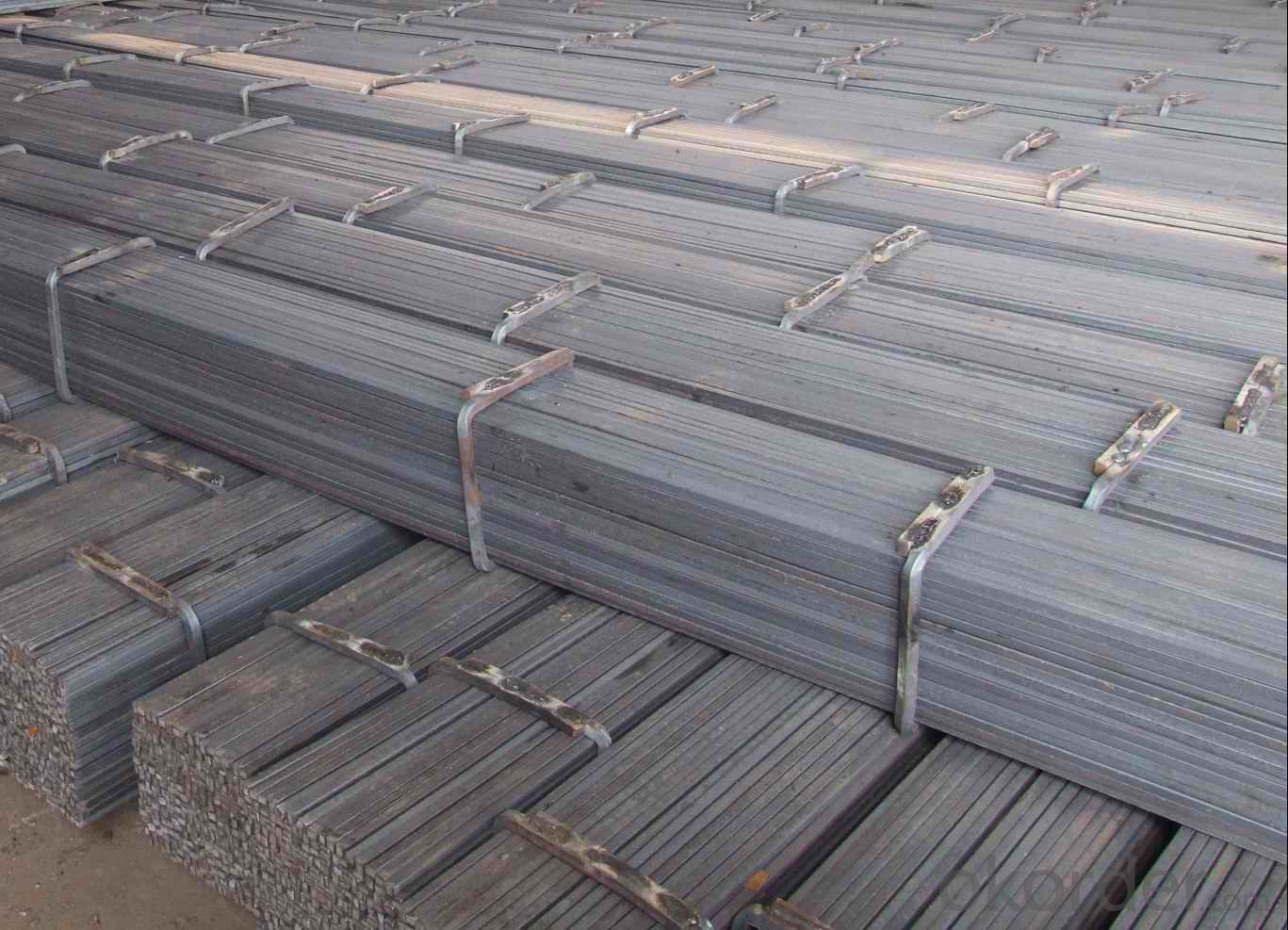
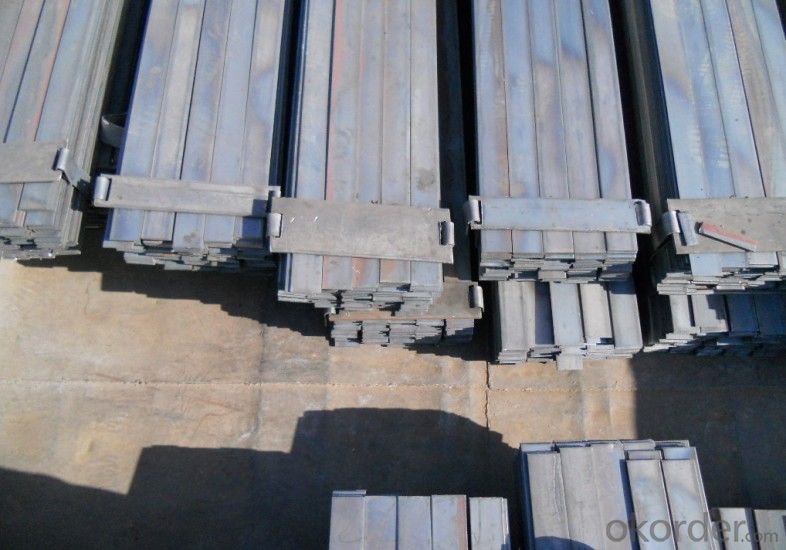
- Q:Can steel flat bars be machined?
- Indeed, it is possible to machine steel flat bars. Machining entails utilizing machine tools to shape, cut, or drill a material. Steel, being a versatile substance, can be readily machined to fulfill specific requirements. To machine steel flat bars, one must employ a range of tools including lathes, mills, drills, and grinders to cut, shape, or generate holes in the metal. Nonetheless, it is crucial to acknowledge that the machinability of steel can differ based on its composition, hardness, and heat treatment. To attain the desired outcomes when machining steel flat bars, it is imperative to select the appropriate tools, cutting speeds, and feeds.
- Q:What is the maximum load that steel flat bars can support?
- The maximum load that steel flat bars can support depends on various factors such as the dimensions of the bar, the type and grade of steel used, and the method of support. Therefore, it is difficult to provide a specific answer without more details.
- Q:How do you prevent warping of steel flat bars during fabrication?
- To prevent warping of steel flat bars during fabrication, several measures can be taken. Firstly, it is crucial to ensure that the bars are stored and handled properly before fabrication, as any distortion or bending can lead to warping. Additionally, maintaining proper temperature and humidity conditions in the fabrication area is essential, as high temperatures can cause the bars to expand unevenly and result in warping. Adequate cooling techniques, such as quenching or controlled cooling, can also be employed to minimize the risk of warping. Lastly, using appropriate welding techniques and evenly distributing heat during the fabrication process can help prevent warping of steel flat bars.
- Q:What are the different types of edge finishes available for steel flat bars?
- There are several different types of edge finishes available for steel flat bars, depending on the desired aesthetic and functional requirements. Here are some of the most common types: 1. Square Edge: This is the most basic and simple edge finish, where the edges are left untouched and remain square in shape. It is commonly used for structural applications or when the appearance is not a significant factor. 2. Rounded Edge: Also known as a radius edge, this finish involves rounding off the sharp edges of the flat bar. It provides a smoother and more visually appealing appearance while also improving safety by reducing the risk of injury from sharp edges. 3. Beveled Edge: In this finish, the edges of the flat bar are cut at a specific angle, usually at 45 degrees. Beveled edges are often used in applications where two flat bars are joined together at a specific angle, creating a clean and precise joint. 4. Rolled Edge: This type of finish involves rolling the edges of the flat bar to create a curved or rolled appearance. Rolled edges are commonly used for decorative purposes, as they add a unique and stylish touch to the flat bar. 5. Serrated Edge: A serrated edge finish features small notches or teeth along the edges of the flat bar. This type of finish is often used in applications where enhanced grip or traction is required, such as grating or flooring. 6. Chamfered Edge: Chamfering involves cutting a beveled edge along the length of the flat bar, rather than just at the ends. This finish is commonly used to remove sharp corners and make it easier to handle the flat bar. These are just a few examples of the different edge finishes available for steel flat bars. The choice of edge finish will depend on factors such as the intended use, aesthetic preferences, safety requirements, and cost considerations.
- Q:How do steel flat bars compare to stone flat bars?
- Steel flat bars and stone flat bars have distinct differences in terms of material composition, physical properties, and applications. Steel flat bars are made from alloyed steel, offering high strength, durability, and corrosion resistance. They are versatile and widely used in construction, manufacturing, and engineering projects due to their excellent load-bearing capabilities and ability to withstand extreme conditions. On the other hand, stone flat bars are typically made from natural or engineered stone materials, which provide a unique aesthetic appeal and can be used in decorative applications. However, stone flat bars may have limitations in terms of strength and flexibility compared to steel flat bars. Therefore, the choice between steel and stone flat bars depends on the specific purpose and desired characteristics required for the intended use.
- Q:Are steel flat bars suitable for making cutting or scraping tools?
- Yes, steel flat bars are suitable for making cutting or scraping tools. Steel is a strong and durable material that can be sharpened to create sharp cutting edges, making it ideal for tools that require slicing or scraping tasks.
- Q:How do you straighten a bent steel flat bar?
- To straighten a bent steel flat bar, a few tools and some patience are required. Below are the steps that can be followed: 1. Evaluate the bend: Assess the severity of the bend and the affected area. This assessment will aid in determining the suitable method and tools to use. 2. Apply heat: If the bar is not too thick, heat can be utilized to aid in straightening. Heat the bent area using a blowtorch or heat gun until it turns red-hot. This will make the steel more pliable and easier to manipulate. 3. Utilize a vice: Securely clamp the bar in a vice, ensuring that it is positioned in a way that allows access to the bent area. The vice will provide the necessary stability for straightening. 4. Exert pressure: Gently tap the bent area in the opposite direction of the bend using a hammer or mallet. Begin from the outer edges and gradually progress towards the center. Apply controlled and consistent pressure, being careful not to strike too forcefully, as this could damage the bar or create new bends. 5. Monitor progress: After each strike, release the bar from the vice and inspect the bend. If it is straightening out, continue with the process. If not, reapply heat and attempt again. 6. Repeat as needed: Depending on the severity of the bend, steps 2 to 5 may need to be repeated multiple times. Take your time and exercise patience, as rushing the process could result in further damage. 7. Cool down: Once the bar is straightened to your satisfaction, allow it to naturally cool down or expedite the process using water. This will aid in setting the steel in its new shape. 8. Test for straightness: After cooling, confirm the bar's straightness by placing it on a flat surface. If slight bends remain, you can repeat the process or employ a straightening jig or press for more precise adjustments. Remember, working with metal can be hazardous, so always wear appropriate protective gear, such as gloves and safety glasses. If you are uncertain about the procedure or lack the necessary tools, it is advisable to seek professional assistance to prevent accidents or further damage.
- Q:Can steel flat bars be used for making automotive frames or chassis?
- Steel flat bars are suitable for the construction of automotive frames and chassis. This is because steel is known for its strength and durability, making it a popular choice for such applications. These flat bars, which have a rectangular shape, can be used as structural components in the construction process. They can be connected by welding or bolting to achieve the desired shape and size, offering excellent load-bearing capabilities and stability. Moreover, steel flat bars have good resistance to impact and fatigue, allowing them to withstand different driving conditions and stresses. In addition to their performance benefits, steel is easily accessible and cost-effective, making it a practical option for automotive manufacturers.
- Q:Can steel flat bars be drilled or machined?
- Yes, steel flat bars can be drilled or machined. Steel is a versatile material that can be easily machined or drilled using appropriate tools and techniques. Flat bars made of steel can be drilled using a drill press or handheld drill equipped with a suitable drill bit. Similarly, they can be machined using milling machines, lathes, or CNC machines to achieve desired shapes or dimensions. However, it is important to use the right cutting tools and lubricants to ensure efficient machining and to prevent damage to the steel flat bars.
- Q:What are the different methods of joining steel flat bars?
- There are several methods of joining steel flat bars, each with its own advantages and limitations. 1. Welding: This is the most common method of joining steel flat bars. It involves melting the edges of the bars together and allowing them to cool and solidify, creating a strong bond. Welding is versatile and can be done using various techniques such as arc welding, gas welding, or spot welding. 2. Bolting: Another popular method is to join steel flat bars using bolts. Holes are drilled through the bars, and bolts are inserted through the holes and tightened with nuts. Bolting allows for easy disassembly and reassembly, making it a suitable choice for temporary connections or situations where frequent maintenance is required. 3. Riveting: Riveting involves using metal fasteners called rivets to join steel flat bars. A hole is drilled through the bars, and a rivet is inserted into the hole. The end of the rivet is then hammered or mechanically pressed to create a head, securing the bars together. Riveting provides a strong and permanent connection but requires special tools and skills. 4. Adhesive bonding: This method involves using industrial adhesives to bond steel flat bars together. The adhesive is applied to the surfaces to be joined, and pressure is applied to ensure a strong bond. Adhesive bonding can be a viable option when welding is not suitable, or when a more aesthetically pleasing joint is desired. However, the strength of the bond may be lower compared to welding or mechanical fastening methods. 5. Mechanical fasteners: Steel flat bars can also be joined using mechanical fasteners such as screws, nails, or clips. These fasteners are inserted into pre-drilled holes or slots in the bars and tightened to secure the connection. Mechanical fasteners offer quick assembly and disassembly, but their strength may not be as high as welding or riveting. It is important to consider factors such as the intended use, load-bearing requirements, aesthetics, and ease of assembly when selecting the method of joining steel flat bars. Each method has its own advantages and limitations, and the appropriate choice will depend on the specific application.
1. Manufacturer Overview |
|
|---|---|
| Location | |
| Year Established | |
| Annual Output Value | |
| Main Markets | |
| Company Certifications | |
2. Manufacturer Certificates |
|
|---|---|
| a) Certification Name | |
| Range | |
| Reference | |
| Validity Period | |
3. Manufacturer Capability |
|
|---|---|
| a)Trade Capacity | |
| Nearest Port | |
| Export Percentage | |
| No.of Employees in Trade Department | |
| Language Spoken: | |
| b)Factory Information | |
| Factory Size: | |
| No. of Production Lines | |
| Contract Manufacturing | |
| Product Price Range | |
Send your message to us
Hot Rolled Steel Flat Bar with High Quality
- Loading Port:
- Tianjin
- Payment Terms:
- TT OR LC
- Min Order Qty:
- 25 m.t.
- Supply Capability:
- 10000 m.t./month
OKorder Service Pledge
OKorder Financial Service
Similar products
New products
Hot products
Hot Searches
Related keywords
